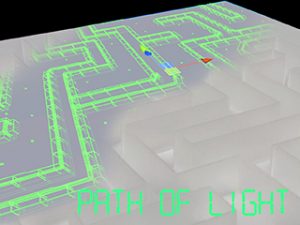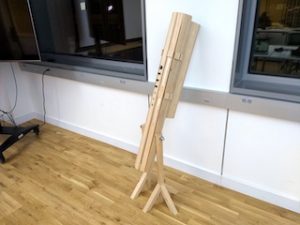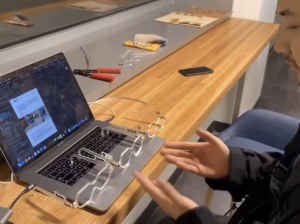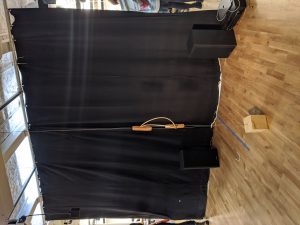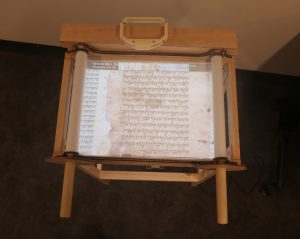Abigail Faelnar
The Steampunk Coffee Machine is a reimagined coffeemaker that creates an enjoyable brewing experience by guiding its user in making the perfect cup.
https://www.abigailfaelnar.com/steampunk-coffee-machine
Description
The Steampunk Coffee Machine is an interactive device made by Abigail Faelnar, Erkin Salmorbekov, and Sammy Sords as the final project for Intro to Physical Computing.
Steampunk is the retrofuturistic reimagination of modern technology, inspired by the steam-powered machinery of the Victorian age. In this spirit of mixing old with new, this coffee machine brings together analog inputs with digital displays, and creates a semi-automated process for the typically manual method of pourover coffee brewing. It also gives a steampunk feel by design – with dark wood and brass/gold finishes, a doorstop repurposed as a lever, visible pipes, and vintage lightbulbs connected to a pull chain.
The machine provides guidance to an individual user on which and how much coffee to use. By answering a few questions about your current state and coffee preferences (1. How are you doing today?, 2. How strong would you like your coffee?, 3. Which roast profile do you prefer?), the machine will tell you which coffee beans to select (out of three available options for light, medium, and dark) and how many grams of coffee you need to measure for a perfect cup (in a 10 oz. mug) according to ideal coffee to water ratios.
After the machine displays your coffee type and number of grams, you scoop out the grounds until the weight on the scale matches the recommended amount. From there, you pour water into the bucket, place your coffee grounds in the filter, pull a lever down, and the coffee machine begins to heat the water and drip it through a faucet right above the filter, preparing a cup of coffee for your enjoyment.
Classes
Introduction to Physical Computing


